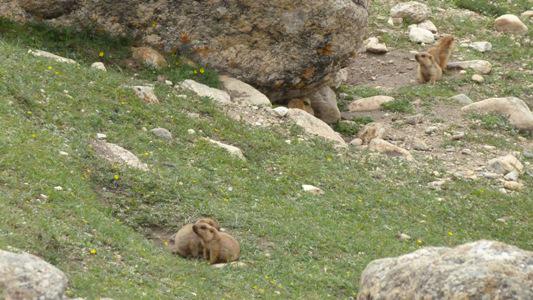Buddi Sagar Poudel
This study will quantify changes in plant communities in response to livestock grazing and effects on a common herbivore, the Himalayan marmot in the Nepalese Trans-Himalaya.
The biodiversity of Trans-Himalayan grassland ecosystems is under threat. This study will quantify changes in plant communities in response to livestock grazing and effects on a common herbivore. This study will involve the Upper Mustang region of Nepal, within the Annapurna Conservation Area. Populations of natural herbivores are decreasing and apex predators such as Snow Leopard are under serious threat. Snow Leopard include livestock in their diet leading to direct conflict with herders. Competition for food is usually suggested as the mechanism causing reductions in populations of wild herbivores. Degradation of pastoral lands is also of direct concern to the herders.

Marmots in Upper Mustang.
There is a need for a comprehensive conservation strategy based on sound ecological understanding and involving all interests. There is a widely acknowledged need to develop and implement a comprehensive strategy to establish an effective compromise between biodiversity conservation, the maintenance of ecological services and human development across the Himalayan montane grassland regions. At present the knowledge base is inadequate to achieve this. This project will make significant progress towards this goal and set in motion a program that will be the first attempt to achieve the goal on an evidence-based foundation.
The specific contributions of the project will be: i) Quantification of the effects of varying levels of livestock grazing on plant community structure, ii) Quantification of the effects of changes in available plant food through varying grazing pressure on the diet of a model common herbivore, the Himalayan marmot, and iii) Engagement of herders in the basic ecological ideas, what determines the amount and quality of food available to herbivores and the effects of increasing livestock pressure.